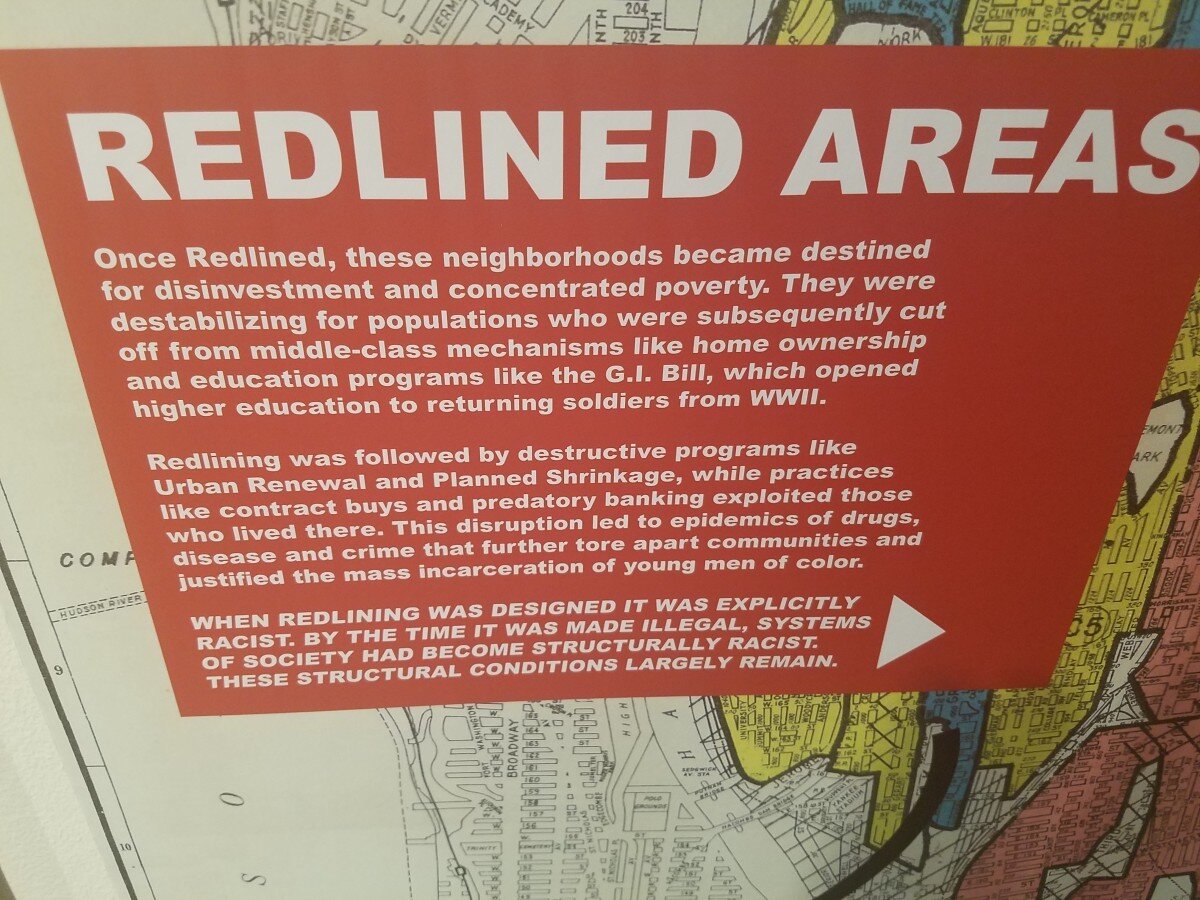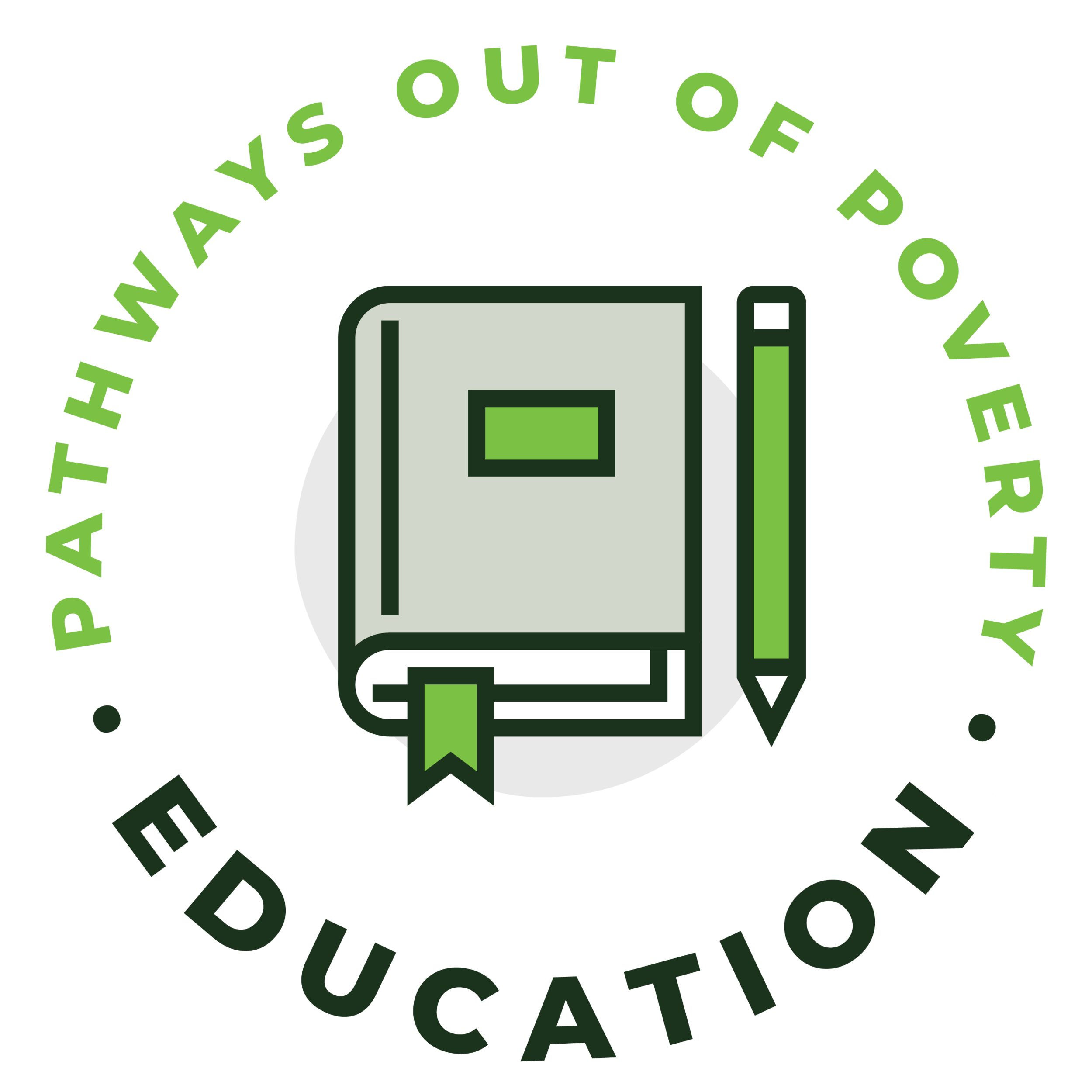
Causes Of Hunger
The causes of hunger in the United States are complex, varied, and interconnected; StarkFresh believes poverty to be the leader of these causes.
To that point, not every poor person is hungry, but almost all hungry people are poor.
They cannot afford enough food.
They cannot afford sufficient nutrient-dense food.
They cannot afford the supplies they need to grow their own food.
Millions live in hunger and are malnourished due to one or more of the following realities:
Hunger is a dimension of extreme poverty and one of its most critical symptoms. Poverty causes hunger, and hunger contributes to poverty. This cycle is a difficult one from which to break free.
To paint a clearer picture of this cycle and how it came to exist in our community, we identified ten key points that guide our mission to fight hunger by finding meaningful pathways out of poverty.
Click the pathway icons below to learn how we are specifically addressing these causes.
• POVERTY •
People living in poverty lack the resources necessary to pay for basic needs such as food, water, and shelter, and when people don’t have enough money to feed themselves and their families, they become physically and mentally weaker than the rest of the population, reducing their relative earning power and making it harder for them to escape the poverty cycle.
Often this does not just affect their families in the present but also makes it more likely that their children and grandchildren will live in poverty.
In short, the poor are hungry, and their hunger traps them and their families in an ongoing cycle of poverty.
Click the pathway icons below to learn how we are specifically addressing these causes.
• CONFLICT/ DISPLACEMENT •
Americans are fortunate not to experience warfare on home soil, whereas most people who experience conflict do so where they live.
However, daily conflict and displacement are a reality for those among us who live in neighborhoods with high crime rates or in circumstances that are violent, and this makes them more susceptible to malnutrition.
Click the pathway icons below to learn how we are specifically addressing these causes.
• JOB INSTABILITY •
Many Americans are living in poverty because they cannot find work or because the jobs available to them pay too little to support them and their families, and it is their poverty that causes their hunger.
Hunger rates soar in areas where the local economy is in a slump. In Stark County, this has been a major problem for decades. Some residents cannot secure employment that allows them to be well-nourished.
For some, the challenges are even more significant.
Those who have gone to prison or who have even been found guilty of a misdemeanor for which they spent time in jail most experience widespread job discrimination, making it difficult to find work after attempting to reenter the community.
Single parents may not be able to take a job or work enough hours because of the inability to find affordable or convenient childcare.
Click the pathway icons below to learn how we are specifically addressing these causes.
• UNEXPECTED LIFE CRISIS •
One of the quickest roads to poverty is a major life crisis, and once the cycle of poverty begins, it can be overwhelming and difficult to escape.
Life crises that can lead to poverty include:
The loss of a job or a business failure
A health issue, resulting in high bills or loss of wages
A death in the family
An unplanned pregnancy
The end of a serious relationship or marriage
A loss of secure housing resulting from a foreclosure or eviction
An automotive accident that makes it impossible to maintain a job
A criminal conviction or incarceration
Childcare issues that make it impossible to attend school or work
When a sudden loss of income makes it difficult for someone to feed themselves adequately, their hunger becomes one of the first indicators that they are in danger of entering the cycle of poverty.
Click the pathway icons below to learn how we are specifically addressing these causes.
• PUBLIC POLICY •
Public policies that create systemic physical and economic barriers to getting or staying out of poverty are often overlooked as a cause of hunger. The intentionality and long-lasting impact of these policies may not be something we find comfortable to admit or confront, but they are a major factor nonetheless.
Many policies and laws have historically been enacted to keep people of color from attaining status or success in society, and the damage is still being felt daily in the communities most affected.
Policies that have long kept millions, especially people of color, mired in poverty include:
Redlining and other mortgage market discrimination
The “war on drugs”
Wage disparities and discriminatory hiring practices
Tax codes favoring homeowners
Urban Renewal tactics
Banking regulations designed to reduce loans and other investment opportunities for non-white patrons
Recognizing that these policies were intentional is the first step toward creating effective strategies to counter the lingering effects of these discriminatory practices.
Click the pathway icons below to learn how we are specifically addressing these causes.
• INSUFFICIENT INFRASTRUCTURE •
In the United States, poor infrastructure design can create physical barriers to accessing nutritious food.
Our corporate-driven food production and distribution system often penalizes small farmers and processors, which can directly affect the quality of food available at affordable prices.
People in poverty often tend to live in food apartheid communities, where there may be few (if any) permanent grocery stores, yet plenty of fast-food restaurants and convenience marts selling food high in fat and sugar but low in nutritional value.
Without appropriate infrastructure to ensure that a person's needs are fully met, people in poverty continue to rely on charity or emergency food pantries, even when the food they receive may be nutrient deficient.
Click the pathway icons below to learn how we are specifically addressing these causes.
• LACK OF KNOWLEDGE •
Unfortunately, the generational knowledge of our ancestors has essentially become lost in the sea of commercialization that characterizes our society; this has diminished our collective knowledge of food, health, and agricultural systems. It can be argued that there are now generations of people who do not understand:
· Where food comes from
· What foods are healthy
· How to prepare foods from scratch
· How to grow food
· Why words such as “sell-by-date,” “low-fat,” or “sugar-free” are highly misleading
· How meat products are produced
· That large food corporations receive subsidies to supply food of low nutrient density
· That current subsidies penalize small and local farmers who produce organically-grown food
Lack of knowledge takes many forms and is quite complicated. Living in a state of hunger often does not allow a person to be mentally prepared to learn the things necessary to nourish themselves with healthy food.
Click the pathway icons below to learn how we are specifically addressing these causes.
• POOR FOOD ACCESS •
Food deserts, swamps and insecurity are neat and clean expressions that describe food access problems, but they do not explain how our entrenched problem of poor food access came to be.
Poor food access is not a simple problem of infrastructure, and it cannot be solved by simply building a grocery store in an area that doesn't have one. It also is not a simple problem of lack of any kind of food, and it cannot be solved by donating foods (especially those high in sugar and sodium) to people who are hungry.
Poor food access stems from both a community's policies and multiple aspects of its infrastructure that, in combination, prevent easy, comprehensive approaches to improve food access from being implemented.
Click the pathway icons below to learn how we are specifically addressing these causes.
• POOR FOOD QUALITY •
Many groups say they are fighting hunger; however, in most cases, the food they provide to those in need is not nutrient-dense. Their focus often centers on the amount of food given out, rather than its quality. Instead of applauding the ability to provide four meals for less than a dollar, we should ask why those meals are so cheap.
People may accept poor-quality food because of how inexpensive it is, especially when it is readily available; yet the effects of eating that poor-quality food can manifest in severe health issues later in life.
Places with the highest hunger levels are also where the most significant health disparities exist. And even when people can incorporate commercially available fruits and vegetables into their diets, that produce is on average 8-37% less nutrient-dense than it was just 60 years ago.
Click the pathway icons below to learn how we are specifically addressing these causes.
• HIGH FOOD COST •
High food costs prevent poor people from accessing better-quality foods. In addition nutrient-dense, organically grown produce and meat produced from a nutrient-rich diet are unattainable primarily to those living in poverty.
The allure of cheap food that can satisfy one’s hunger cravings is undeniable, especially when the money available for food is limited; however, this “cheap food” is only cheap in its immediate cost because its impact on peoples’ bodies and health can be very costly indeed.
Access to better quality food and a healthier diet is possible when people can grow their own food.
Click the pathway icons below to learn how we are specifically addressing these causes.












